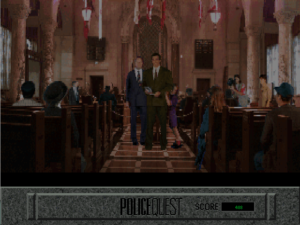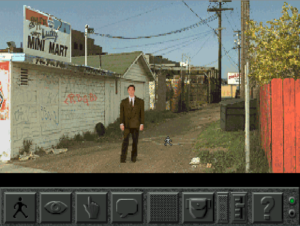Final Fantasy VI: Character Reassessment
One nice thing about the companion-hunt in the FF6‘s second half: you find people in a different order than the first time around. This forces you to spend some quality time with the ones you acquired late and never really saw the point of. So I’m rethinking some of what I said before.
I said before that the time needed to charge up Cyan’s special “sword technique” attacks made them less than worthwhile in the time-sensitive ATB system. This might have been the case earlier in the game, when attacks were resolved relatively quickly. But the more powerful attacks — both yours and the monsters’ — tend to have longer and more elaborate animations associated with them. The extreme end of this is of course the summon animations, but simple high-level spells take multiple seconds to execute, and when there are a lot of them flying around, you can wind up with your entire party queued up, waiting to carry out the orders you’ve already given them. This is the time to start Cyan charging up a special attack. This isn’t always practical, but that’s a good thing. It gives you a reason to not just automatically use the special attack all the time.
With Setzer, I complained about the slot-machine-like interface for his special moves: it asks you to stop three wheels with precise timing to get three matching symbols. I didn’t use it much before, because I found myself incapable of timing it right. But now, I’m certain that it didn’t really matter. I heard tell of some other game with an interface of this sort that only pretended to rely on the player’s timing: the outcome was really predetermined. And now that I’m aware that this sort of thing goes on, I’ve been paying closer attention to Setzer, and I’m quite certain that he’s cheating as well. I’m putting absolutley no effort into getting the timing right, and I’m still getting matches far more often than you’d expect from chance — in fact, if the first wheel stops at a picture of a gemstone, I always get three gemstones. No exceptions. I hadn’t noticed this in my earlier sorties, but Setzer is significantly higher level now, so perhaps he’s just better at it. It all makes me wonder how prevalent this kind of fakery is. Are there any games that use this kind of interface and don’t cheat the player determination? What’s the psychological effect on all the Japanese children growing up immersed in this? Are they developing an unjustified sense of confidence in their abilities? I suppose that’s part of the RPG experience anyway — the sense of personal improvement that’s really just a matter of the computer gradually making things easier for you. But at least it’s more honest about it most of the time. At any rate, now that I know that Setzer’s special attacks aren’t really dependent on my reflexes, I’m much more willing to use them. It means he’s the game’s specialist in powerful but randomized and unreliable effects, like FF5‘s Geomancer. I kind of liked the Geomancer.
Little Relm’s special power is that she can “sketch” monsters to use their own attacks, randomly-selected, against them. In most cases, this isn’t a very useful ability: the monsters are so much weaker than the party, and often immune to the same kind of elemental damage that they use against you. But I’ve come to realize that she’s got an even better power: her wardrobe. She can wear tiny but powerful outfits that no one else can. (Although I’ve discovered that her grandfather Strago can fit into the moogle suit too, which is a little creepy.) Okay, so that’s not unique to Relm. There are a bunch of character-specific items — mostly weapons — and most equipment can be used by only a few characters. But Relm starts off with an item that’s very powerful, and which only she can use: the “Safty Ring” [sic] left to her by her mother. I don’t think I fully appreciated this before, because it has no effect on her stats and the in-game description is ambiguous. What is does is, it gives her a near-total immunity to direct-damage spells. That is a very big deal. In the second half, there’s a tower populated entirely by spellcasting Kefka-worshippers (and one dragon). I’ve made several attempts at ascending it, and still haven’t reached the top. But I wouldn’t have gotten as far as I have without that ring.
Well, except that an item identical to the ring but useable by anyone can be found in the tower’s lower reaches. I really should have figured this out back when it made more of a difference.
 Comments(0)
Comments(0)
